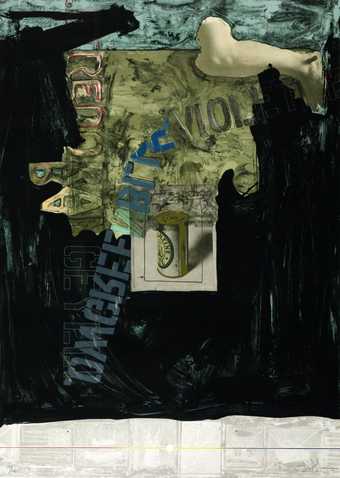
Jasper Johns
Decoy
(1971)
Tate
The term is applied to the work of artists such as Robert Rauschenberg and Jasper Johns because of their use of collage, assemblage and found materials and their apparently anti-aesthetic agenda. Dada was formed in negative reaction to the horrors and folly of the first world war and lead to art, poetry and performance often satirical and nonsensical in nature. In the 1950s Rauschenberg, Johns and others began to include popular imagery, and absurdist contrast in their work. There were also strong echoes of dada in environments and happenings of the 1950s and 1960s.
The term neo-dada has some justification due to the presence in New York of the great French dada artist Marcel Duchamp whose ideas were becoming increasingly influential.
Neo-dada’s counterpart in Europe was nouveau réalisme.
